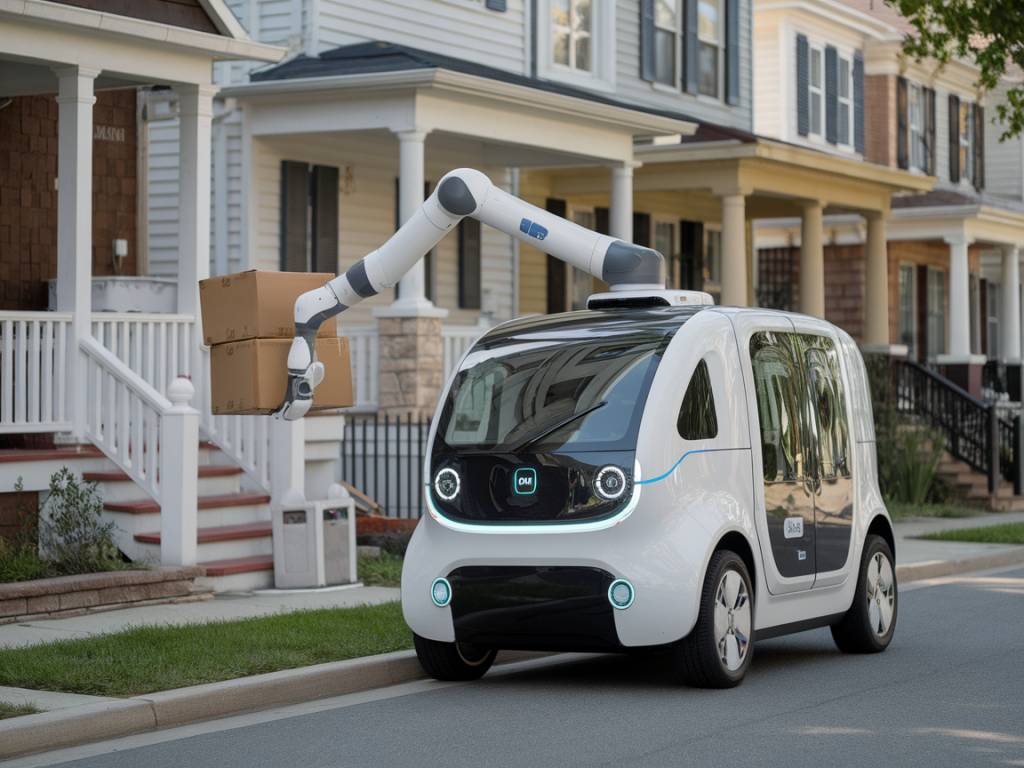The advent of autonomous vehicles (AVs) has been one of the most transformative innovations in modern technology. As we venture deeper into the 21st century, the implications of these advancements are becoming increasingly evident, particularly in the realm of last-mile delivery. This article explores how autonomous vehicles are reshaping the landscape of supply chains and revolutionizing the last leg of delivery operations.
The Evolution of Logistics and Last-Mile Delivery
To understand the impact of autonomous vehicles on last-mile delivery, it is essential to first comprehend the traditional logistics model. Historically, logistics involved a complex network of production, warehousing, and distribution channels before a product reached its final destination. The last-mile delivery, which involves delivering goods from a transportation hub to the end customer, is often the most time-consuming and expensive part of the supply chain. This stage is notorious for its inefficiencies, high costs, and logistical challenges, such as traffic congestion and labor shortages. Autonomous vehicles promise to address many of these issues, thereby revolutionizing the logistics industry.
Efficiency and Cost Reduction
One of the primary advantages of autonomous vehicles in last-mile delivery is the potential for significant cost reductions. According to research by McKinsey & Company, AVs could reduce last-mile delivery costs by up to 40%. This is achieved through several mechanisms:
- Labor Savings: The elimination of human drivers reduces labor costs, which account for a substantial portion of last-mile delivery expenses.
- Fuel Efficiency: Autonomous vehicles can optimize routes and driving patterns to conserve fuel, further reducing operational costs.
- Maintenance: AVs are designed with advanced diagnostic systems that predict maintenance needs, reducing downtime and repair costs.
Enhanced Delivery Speed and Reliability
Autonomous vehicles can significantly enhance the speed and reliability of last-mile deliveries. These vehicles are not subject to human limitations, such as fatigue or the need for breaks. Consequently, AVs can operate around the clock, shortening delivery times and increasing the reliability of supply chains. Additionally, advanced sensors and machine learning algorithms enable AVs to navigate traffic more efficiently, avoiding congestion and adapting to real-time road conditions.
Environmental Benefits
The integration of autonomous vehicles in last-mile delivery also comes with substantial environmental benefits. Many AVs are being designed as electric vehicles, which produce zero emissions, thereby reducing the carbon footprint associated with logistics operations. Furthermore, the optimization of delivery routes and driving patterns contributes to decreased energy consumption and lower greenhouse gas emissions.
Customer Experience Improvement
In today’s competitive market, customer satisfaction is paramount. Autonomous vehicles can significantly enhance the customer experience by providing faster and more reliable deliveries. Real-time tracking and communication systems allow customers to monitor their deliveries accurately, reducing uncertainty and increasing satisfaction. Additionally, the precision of AVs can minimize delivery errors, ensuring that customers receive the correct products on time.
Safety Implications
Safety is a critical consideration in the deployment of autonomous vehicles. While there are concerns about the safety of AVs, studies have shown that they have the potential to reduce accidents significantly. AVs are equipped with advanced sensors, cameras, and radar systems that provide a 360-degree view, enabling them to detect and respond to obstacles more quickly than human drivers. Furthermore, AVs adhere strictly to traffic laws and can communicate with each other, further reducing the likelihood of collisions.
Challenges and Considerations
Despite the numerous advantages, the adoption of autonomous vehicles in last-mile delivery is not without challenges. These include:
- Regulatory Hurdles: The deployment of AVs is subject to a complex web of regulations that vary by region. Navigating these regulations can be time-consuming and costly.
- Technological Limitations: While AV technology has advanced significantly, it is not yet infallible. Issues such as sensor malfunctions and cybersecurity threats need to be addressed.
- Public Perception: Acceptance of AVs by the general public is crucial for their widespread adoption. Concerns about safety and job displacement need to be mitigated through education and transparent communication.
Future Prospects
The future of autonomous vehicles in last-mile delivery looks promising. As technology continues to evolve, we can expect further enhancements in AV capabilities, leading to even greater efficiencies and cost savings. Additionally, as regulatory frameworks become more supportive, the deployment of AVs is likely to accelerate. Companies that invest in AV technology and integrate it into their logistics operations stand to gain a competitive edge in the market.
In conclusion, autonomous vehicles are set to revolutionize the last-mile delivery segment of logistics. By enhancing efficiency, reducing costs, improving reliability, and offering environmental benefits, AVs present a compelling case for their adoption. However, addressing the challenges and regulatory hurdles will be crucial for their successful integration into the logistics industry.
Summary: Autonomous vehicles are transforming last-mile delivery by improving efficiency, reducing costs, and enhancing customer experience. Though challenges like regulatory hurdles and technological limitations exist, the future looks promising as AV technology continues to evolve, offering significant benefits to the logistics industry.
